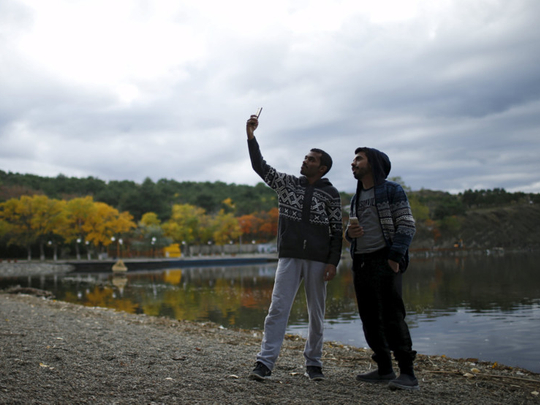
My 9-year-old daughter pauses in the middle of our walk together and asks for my iPhone. Then she requests I take a selfie with her.
I start to dismiss her question and turn it into a teaching lesson, as I usually do, encouraging her to pay attention to her surroundings while pointing the iPhone towards the cerulean sky, blazing sunset or a pink bougainvillea. But before I finish my sentence, she places the phone in front of our faces and snaps the picture, her full smile and my cautious half-grin spreading across the screen. I scold her for disobeying my wishes, hoping my words will outweigh her enthusiasm the next time she sinks into a self-indulgent moment.
The selfie movement is controversial and I will admit: it makes me uncomfortable. Celebrities tend to promote it, with books, Instagram pics and of course, the famous line “Do You Wanna Take a Selfie?” which birthed the eponymous song “#Selfie”. Other people discourage the narcissistic concept of an image uploaded to Facebook or Twitter with a rapt audience liking the posted picture. I tend to fall in the latter category and have discouraged my daughter from engaging in this practice.
But a few months ago my Facebook feed broadcast Prime Minister of India Narendra Modi’s appeal to parents to post selfies with their daughters to combat the inequality between Indian girls and boys and to elevate the relevance of women in a culture which tends to discount the value of a female. This call to action is an important one for Indian women, daughters and mothers across the world who suffer a multitude of injustices from gang rapes and domestic violence to a higher rate of abortions of girls.
Before Modi’s proclamation, I never contemplated the power of a random selfie in my parenting and cultural experience. Afterwards, I reflected on a singular belief: geography is destiny and it impacts my experiences as a daughter and as a mother.
My father, with $7 (Dh26) in his pocket, made the choice to migrate to the United States almost 50 years ago from a small village in India. Two years later my mother joined him. On a September morning in 1973, I was born in a hospital in Texas. My birthplace automatically guaranteed opportunities I most likely wouldn’t have had if I’d been born in a village in India.
As my parents tried to assimilate into the American culture, they emphasised the importance of education and pursuit of confidence-building activities, imploring me to interact with the world and engage with people inside and outside of my culture.
I tried out for the tennis team, took piano lessons and hung out at the mall with my friends — all very American experiences. As a Texas teen, I didn’t grasp my immigrant parents’ shaky leap into the melting pot. As a teen and woman, my identity as a girl never resonated as an obstacle.
After college, I attended law school; my parents never squashed my pursuit of a career deemed as something traditionally for males, or not appropriate for a woman of Indian descent. The idea of limitations because of my sex and culture rarely entered our discussions.
The same pulse will thrum in my daughter’s childhood and foray into adulthood. She is born to second-generation Indian parents in the US whose upbringing is entirely American. So it is unlikely she will feel the stigma young girls face in India.
When I re-evaluated my daughter’s need to take a selfie under this lens, my opinion of her act altered from thinking it was self-indulgent to realising it was empowering. While Modi requested parents to take selfies with their children to make a political statement, my daughter took the initiative to take a snapshot of both of us without giving it any thought, because this is simply part of her cultural context.
My daughter’s selfie reflects a narrative distinct from her counterpart living in a small city in the middle of India. For my daughter, the selfie isn’t a beginning, but a way of life. She is inundated with choices, from choosing the clothes she wants to wear to deciding whether she wants to play with Legos or colour her nails bright blue.
As for the other girl with a different geography, her parents may not own a smartphone or perhaps she stays at home to take care of her younger siblings and as a result isn’t allowed an education. Her upbringing is shaded by the need to care for the communal, whereas my daughter’s experience is more about furthering her individual ambitions.
So the next time my daughter asks me to be in the picture with her, I will participate with a newfound enthusiasm. I’ve shifted my perspective, because I realise a selfie is no longer just a selfie.
I’ve learnt it forever represents freedom, for me, and for my daughter, too.
–Washington Post
Rudri Bhatt Patel is an attorney turned writer and editor. She is working on a memoir which explores Hindu culture, grief and appreciating life’s ordinary graces.












